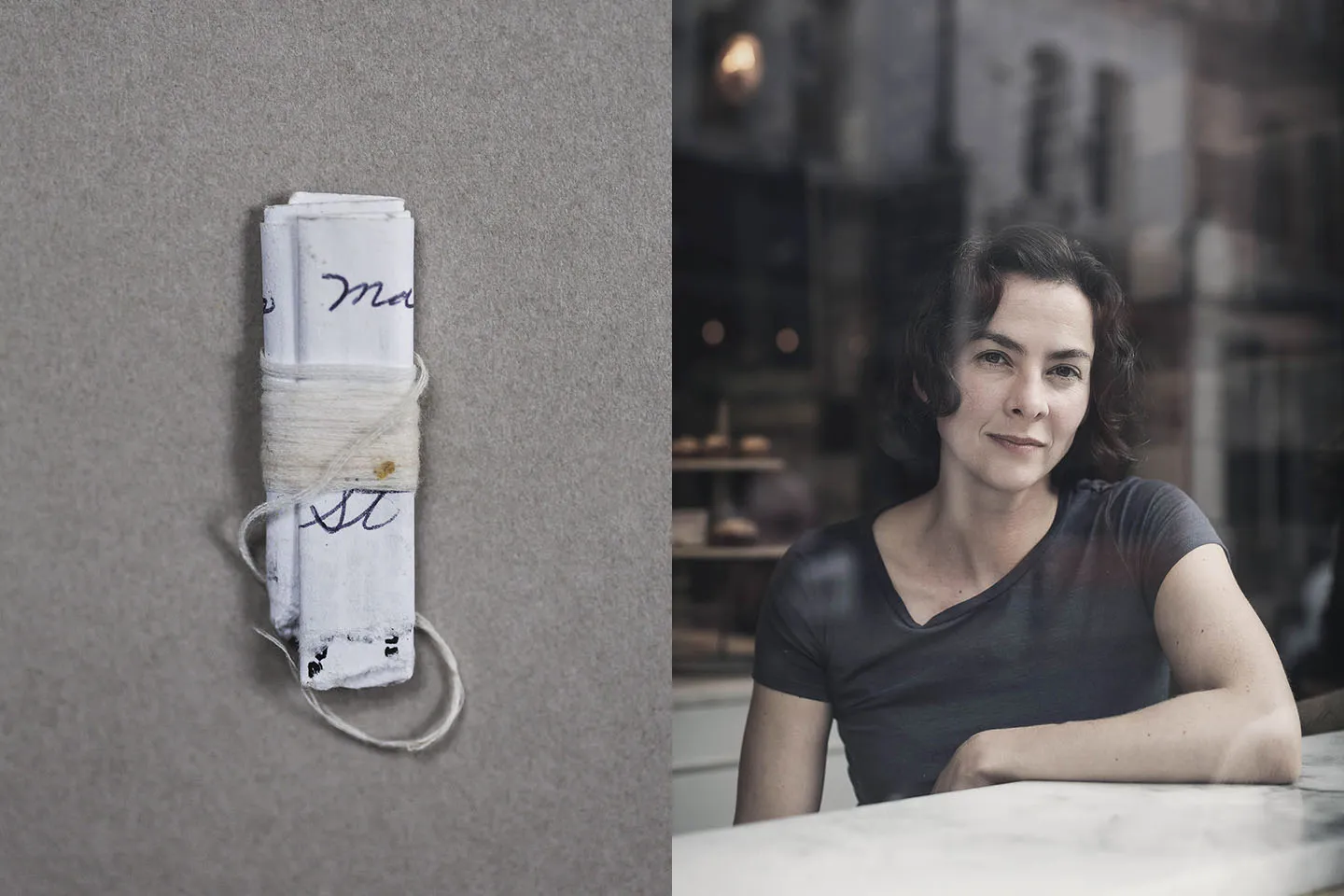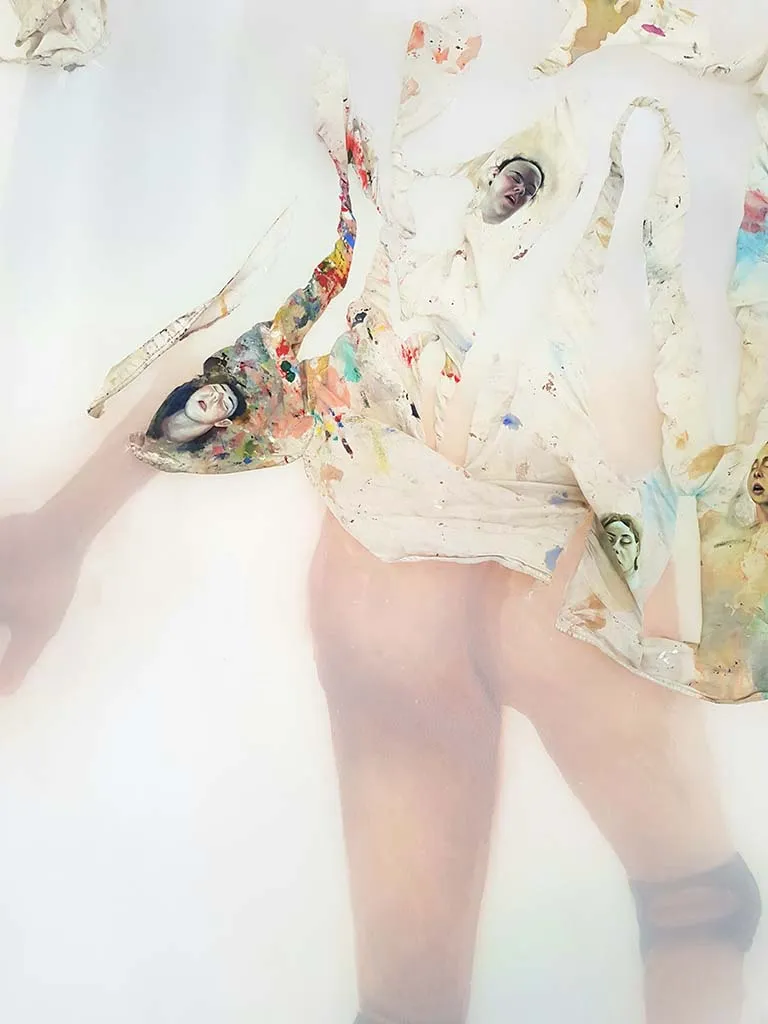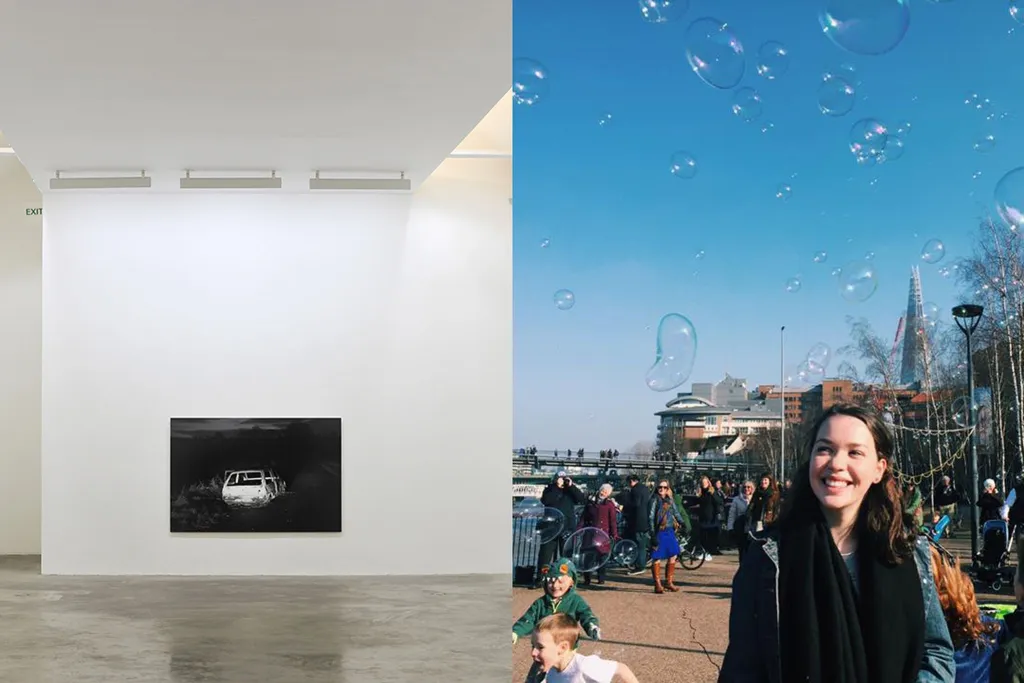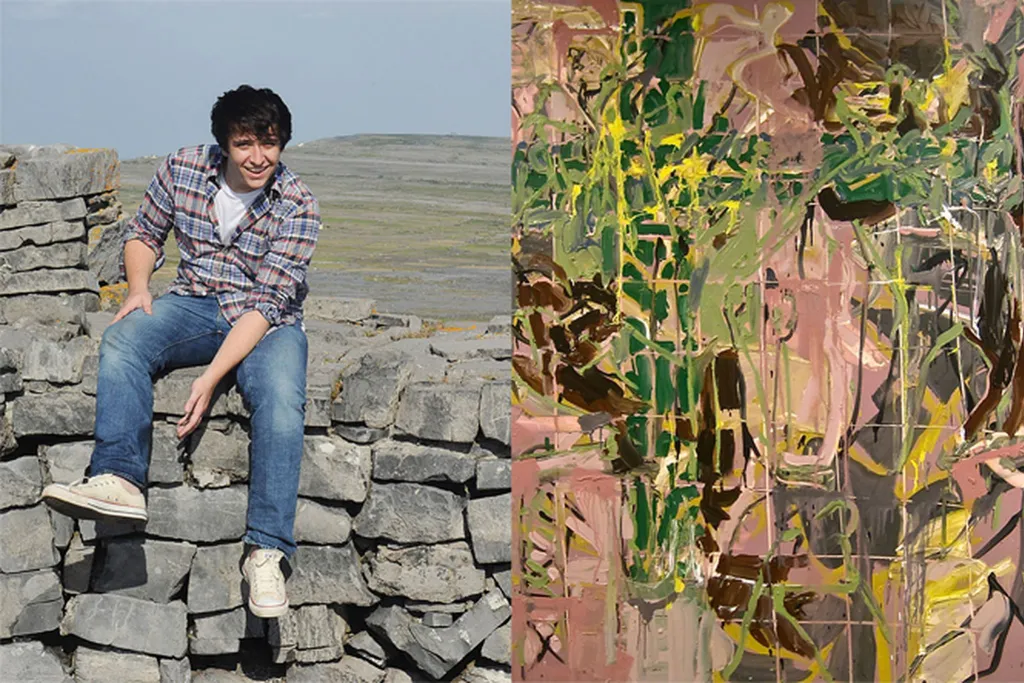Maria Hinds

Community update with Maria Hinds
Maria Hinds is one of our dearest friends. She was instrumental in the early development of the design language for Cow House and has provided almost all of our print and web design since the beginning. She was also one of our first residency artists back in 2008, and her friendship with Rosie goes back even farther when they attended NCAD together in the late ’90s, both graduating in 2000.
Maria is a designer, artist, and activist currently living in New Orleans but travels back to Ireland often. Most recently we were lucky enough to have her teach a design module during FieldWorks, our new gap year art program. We are incredibly grateful for the time Maria has taken to address our questions. She has been extremely generous with her answers below helping us understand more about her important work.

CHS: In 2015 you collaborated with photographer Matthew Thompson on the project Surviving Solitary. Through an investigation of objects and places, this work documents the life of Herman Wallace. How did the subjects in this work represent Mr. Wallace’s life experience? Can you tell us how his personal possessions will live on?
MH: Most of Herman’s objects reveal some kind of insight into solitary confinement, encapsulating a range of experiences from oppression and violence to resistance, ingenuity, and covert political organizing. Aside from functional attributes for me the objects also reveal the psychogeography of incarceration, what it meant to be separated from loved ones, what it meant to affirm one’s humanity through memory and imagination, what it meant when his personhood became state property, tempered by what it meant for him to dissent.
During 42 years of solitary confinement, Herman became quite adept at manipulating the few materials and possessions at his disposal in order to make life slightly easier. In the collection of images, we see some really interesting objects like elongated spoons, reinforced socks to protect the ankles from shackles, gloves made from a thermal undershirt, a ball made from rolled-up sock material. These kinds of items speak to the deprivations of prison existence, and the physical violence incarcerated people are subjected to – sometimes by guards or sometimes by virtue of simply trying to survive within the extreme built environment.
A lot of items also attest to Herman’s political identity, which I believe helped him to maintain his sanity. Items like the prison-issue baseball cap with the hand-drawn black panther logo, or the scrapbook page featuring other panthers and politicos show his commitment to civil rights and social justice. They also show his defiance and refusal of being defined by his 6×9 ft cell, for example, if such items were found by a guard during a shakedown he risked being sent to ‘the hole’, an even more punitive form of solitary confinement.
As an avid writer and communicator, Herman wrote thousands of letters, political essays, and speeches. He used a single sheet of black carbon paper many times over to make duplicates of such documents. This really delicate item harbors layers and layers of history. Another really interesting item was the ‘kite’, a piece of paper wrapped up in string which was used to throw the message into an adjacent cell.
Herman’s relationship with ‘memory’ permeated a lot of the items, which is very affecting. Items like lists he kept of phone calls made, lists of correspondences, lists of food items he swapped with other men, a memory map he drew of the ward he grew up in really provided insight into his state of mind and the measures he took towards accountability. Matthew shot the sites marked on the map, to juxtapose reality with the objects that represented a different and surreal existence. A certain creativity shone through also, like the use of a deck of cards as an address book, or a plastic pen melted to form a screwdriver. These kinds of every day or otherwise banal objects took on new sets of meanings given the context in which they were created.
I donated many of Herman’s possessions to the National Museum of African American History and Culture at the Smithsonian where they will be preserved and archived and made accessible to the public and scholars. I’ve presented the imagery at local law schools and galleries so that Herman’s story stays alive, especially for new generations of organizers who advocate the ending of the use of solitary in prisons. Ultimately we would love to develop it into a full exhibition and publication so that the public can be made aware of the realities of solitary confinement, and also dispel some of their beliefs about incarceration. There are currently over 80,000 people in solitary in North American prisons, many of whom, like Herman, are forced to invent or resist through creative means in order to survive. This project represents their struggles as much as it reflects Hermans life.
CHS: You moved from Dublin to New Orleans back in 2010. What initially drew you to the city? What are some things you learned about the city in your many years there?
MH: At the time I had lived in Dublin for a decade and was contemplating a move to broaden my horizons. I had been doing some graphic design work for an artist named Jackie Sumell and her project “The House That Herman Built”, a long time collaboration between herself and Herman Wallace. I started traveling over and back to New Orleans frequently and became more involved with local organizations working on wider social justice, reentry and incarceration, again through providing graphic design skills. I kind of fell in love with the city at the time and applied for an artist visa so I could stay longer.
New Orleans is a deeply complex, problematic, and culturally rich city where the vestiges of slavery and plantation mentality still pervade its current social practice and identity on so many levels, which is generally reflective of the United States as a whole. I realized there was a lot to learn. Coming from a racially homogenous tiny island at the edge of Europe I was shocked at the visceral and visible effects of racism. I knew about it intellectually but to witness the effects on communities of color in the realms of incarceration, education, employment, housing, access to food, and economic structures was very eye-opening for me. The power of the human spirit to resist this oppression through political organizing and creative expression is also a strong characteristic of New Orleans. I learned a lot about the potential of the arts to change the narrative, raise awareness, and contribute to change-making
CHS: You have been a longtime friend of both Rosie and Frank. You were instrumental in the initial design and layout of the website and printed materials, and continue to design beautiful work for Cow House. You were one of the first residency artists in 2008 and recently came back to teach during our gap year program. In your eyes, how has Cow House evolved? What qualities have been retained since the beginning?
MH: The Cow House is a very important place for me personally. Not only because Rosie and Frank are among my favorite people on earth, but because they extend their welcome, their expertise, and nourishment to so many people at varying levels of their artistic endeavors. By design, the Cow House is a transformative space. It is a space to grow one’s own artistic practice, a space to learn with and from peers, a space to connect with nature, and really become immersed in art thinking. It’s deeply enriching. I have met many inspiring, humble, and talented artists from all over the world at the Cow House, I’ve foraged for sorrel with Michael and Emmet, drank too many cups of tea, and even have a favorite field on the farm. A trip home to Ireland is incomplete unless I have spent a few days there.
I have seen the Cow House evolve from being a wonderful idea with a lot of potential to a fully realized studio practice that has so much to offer and whose offerings continuously evolve. Cow House provides a nurturing, inclusive environment where all touchpoints are intentionally thought out, from studio time to dinner time. I have seen students overcome creative blocks, challenge themselves, and start to really believe in their own artistic talents. I believe the experiences they have at the Cow House are life-affecting and inform who they are as individuals. I’ve seen students return year after year because of this.
I believe that Rosie and Frank had a vision for Cow House Studios from the start, that they implemented step by step as their business grew. It is incredibly soul-warming to see that vision realized and expanded upon. Since the beginning, Rosie and Frank have recognized the importance of artistic expression in its ability to foster personal growth for each individual that crosses their threshold. It is so inspiring to see both Rosie and Frank work one-on-one with students, from teaching them practical skills and pushing conceptual approaches to help them execute their ideas beyond their existing skillsets. It has also been beautiful to see the initial 12-week artists’ residency expand into multiple thematic residencies throughout the year, with the collaboration of local galleries and Irish curators. Many of these residents return to teach during the summer and gap year programs which lends a further multidisciplinary and international flair to the studio setting.
CHS: As a graphic designer and artist working on both professional and personal projects, how, if at all, might your creative approach be similar? Do these two discrete efforts inform one another?
MH: I think they are inextricably linked, mostly because I am attracted to the political – I find great power in socio-political related artworks that provoke me to think or challenge my preconceived notions and so as a creator of visual media I aim towards similar effects whether it’s through my design or visual arts practice.
Thematically a lot of my design projects are related to social and environmental justice issues, labor rights, and gender equity issues, which is the subject matter that I address in my visual arts practice also. So it seems that these two efforts are kind of co-dependent. It’s probably more of a personality thing than anything. I get quite indignant when I see wrongs being willfully enacted upon people and the planet and given my quiet disposition I find it easier to express my feelings through art-making.
On a practical level, the common denominator in both comes down to clear and intentional communication. And this is directly related to who’s eyes land on the project. In graphic design, the question is ‘what visual vocabularies can I use to create a message that can reach a certain target audience’. Whereas in my art practice the overlap translates to “how can I create a visual entry point or a counter-narrative to the status quo?”. Thinking about the viewer and the kinds of messaging needed to reach them can dictate a lot.
CHS: Throughout your career, you have maintained a commitment to utilizing your skills as a designer to aid non-profit organizations, individuals, and specific political causes. When did you discover your skills could be used in this way? How do you find this work and balance your time effectively?
MH: Fresh out of college I learned my trade at a design studio in Dublin. I came to a point where doing corporate work didn’t feel too meaningful. While there’s plenty of designers out there who’d jump at the chance of designing a mural for Coca-Cola for example, it never felt like a good fit for me. I started taking on a few side projects (nixxers) related to land grabs at Newgrange, or HIV awareness campaigns and felt immediately more rewarded. I then moved to a different design studio in Dublin called Language whose portfolio was far more social justice centric, which I found more engaging. I eventually went freelance and became involved in working with artists and culture related bodies like Cow House Studios and Percent for Arts programs, which are likely now a thing of the past. During the last decade in New Orleans, I started to do a lot of pro-bono design work with non-profits which has evolved into a steady stream of related paid work. I got known for doing that type of work and I’ve managed to build up a steady client base by word of mouth. I do a lot of work within the arts, music, and film industry as well as cultural organizations and non-profits, so it’s a nice varied mix, and I’m grateful to still learn new things all the time.
I think a lot about the crossover between my design and art practice because I find that my need to create gets satiated by making design work on a screen when I would prefer to be working on paper or by traditional art-making means. I’m trying to be disciplined about redressing that balance!



